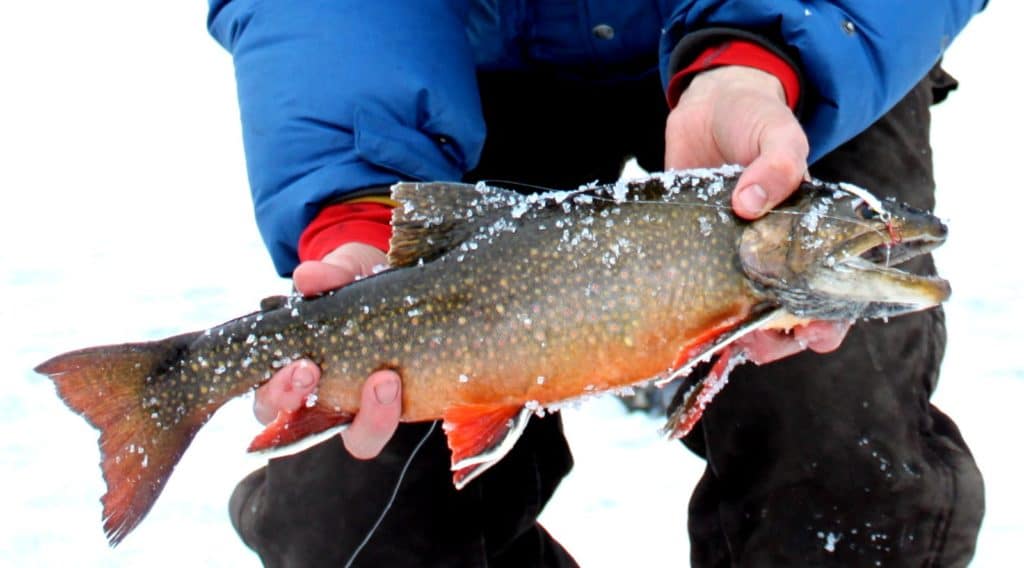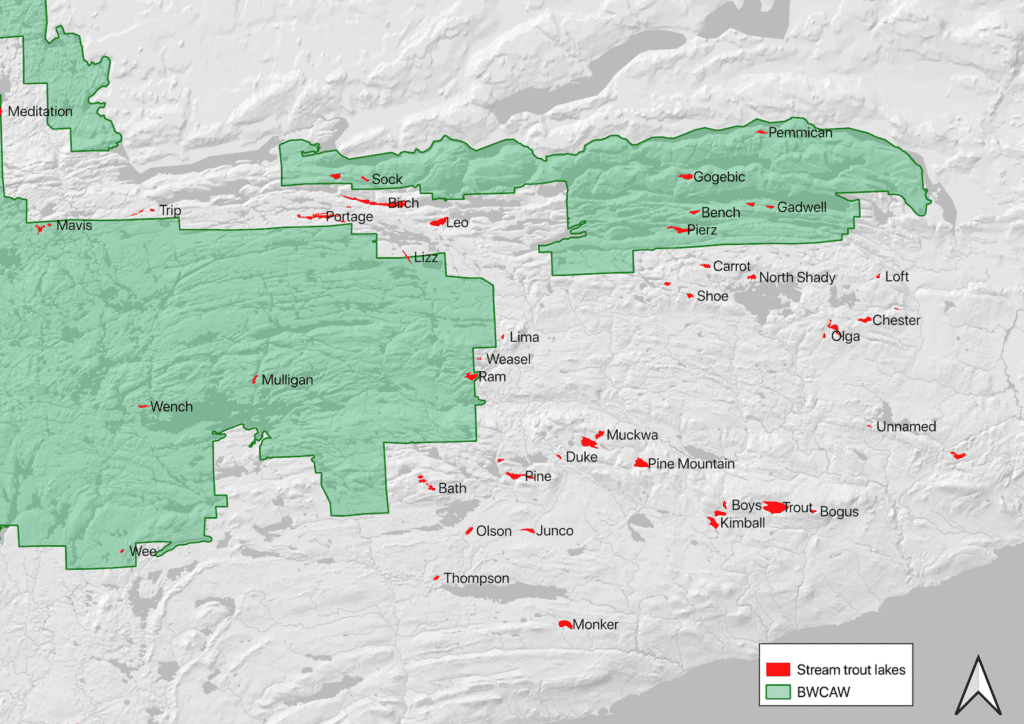
Numerous lakes in the Boundary Waters Canoe Area Wilderness and the surrounding area, which are managed by the Department of Natural Resources for stream trout fishing are facing an uncertain future. The lakes are primarily stocked for brook and rainbow trout, which are popular with anglers.
The DNR has cut its stocking effort in half in recent years, planting young fish in the lakes every other year rather than annually, reports Northern Wilds. Budget cuts and rising costs have also caused the agency stop stocking stream trout lakes inside the BWCAW altogether, for now.
“Since most stocked trout, especially popular brooks and rainbows, live less than four years, every-other-year stocking may lead to inconsistent fishing opportunities,” editor Shawn Perich wrote.
Stream trout are not native to the lakes, and cannot reproduce in them. The fishery is entirely supported by stocking efforts.
The fishing season opens on stream trout lakes Jan. 1 inside the Boundary Waters, and Jan. 18 everywhere else and remains open until March 31. Ice-fishing for stream trout is a popular winter pastime, with trout stamp purchases steady in recent years while other hunting and fishing participation has declined.

A change in equipment combined with wilderness regulations have conspired to keep the DNR from stocking lakes in the Boundary Waters. The agency uses aircraft to stock remote trout lakes, including those in the BWCAW. But in 2019, the agency’s enforcement division airplanes were no longer available for stocking and fishery managers had to switch to using helicopters. The rotary aircraft are not only more expensive, but not approved by the Forest Service to operate in the wilderness.
The use of helicopters for wildlife management inside wilderness areas has been contentious in other parts of the country. In 2016, advocates successfully sued the federal government to halt plans to use helicopters to put research collars on elk in Idaho’s Frank Church-River of No Return Wilderness.
Stream trout are not native in most of the Boundary Waters, only historically having reached as far as was passable up Lake Superior’s tributaries. But they have long been stocked in lakes where the conditions are appropriate to provide recreation. The practice elsewhere has also been criticized for interfering in the ecosystem.
Fisheries managers are also concerned that climate change is making it harder for lakes to stay cold enough for for the stream trout and native lake trout. Stream trout and lake trout all require relatively cold, high-oxygen water to survive.
The DNR has switched to stocking more rainbow trout recently, because they can handle higher water temperatures than brookies, while lakers are hanging on for now but causing concerns. In the Grand Marais area, Trout and Greenwood Lakes have begun losing coldwater habitat during summer’s hottest spells. Less suitable area for the fish may mean a smaller population in the future.
The DNR says it is still working on new plans, but some designated stream trout lakes could be removed from the list in the future. Lakes where trout aren’t doing well and which are hard to stock or access, are difficult to justify.
“We’re trying to see if we can maintain a decent fishery (with every other year stocking) and the jury is still out on that,” Persons said.

